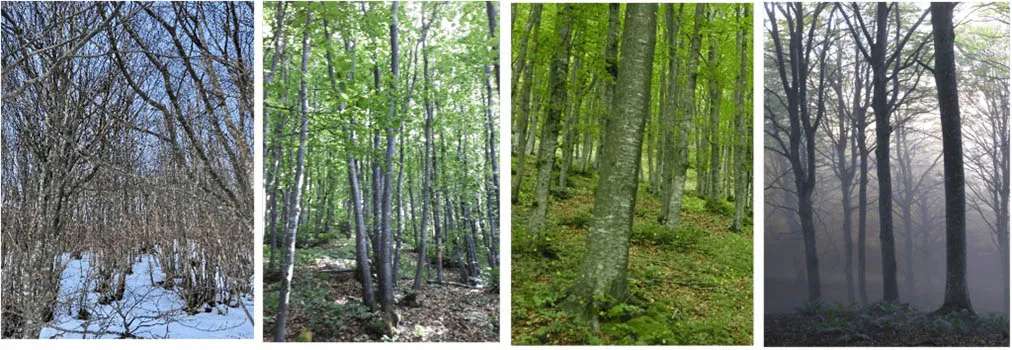
6 April 2025
LIFE CO2RK in Beech Forests: Regione Marche (Italy)
In the Marche region, as in most of the Italian Adriatic coast, there are no cork oak forests or plantations (Quercus suber), therefore the focus of the LIFE CO2RK project in Italy was placed on the common beech (Fagus sylvatica L.).
In the Marche region, as in most of the Italian Adriatic coast, there are no cork oak forests or plantations (Quercus suber), therefore the focus of the LIFE CO2RK project in Italy was placed on the common beech (Fagus sylvatica L.).
This is a largely diffused European species occurring along the entire Apennines Mountains and due to its diverse functions, very prone to be included in valorization programs for sustainable management.

Forests of the Marche region make up more than 35% of the regional surface area (Figure 1a) and are distributed mainly in mountainous areas, 40 to 60 km inland from the seaside.
Beech forests share only 8% of the forested land (Figure 1b) but they are a relevant component given their high ecosystem, economic and recreational values. In Italy beech grows in all regions except Sardinia, and along the Apennines at altitudes of 900-1000 m up to the upper treeline (1800-2000 m asl), from which forest growth is not viable due to the alpine cold and the persistence of snow and ice.
The beech forests of the Marche region can be classified in five different types, depending on the soil (calcareous and siliceous substrates) and altitude (montane and sub-montane beech forests). Historically, in the Marche mountain areas the management of silvo-pastoral resources was mainly based on shared forms, like the “ranco boschivo” small portions of land, where with a rotation cycle of 7-10 years wood coppice, cereal production and livestock grazing were regularly shifted.

Forests in general were largely exploited to obtain wood and non-wood products from litter, charcoal, firewood, wood bundles, poles and some quality timber. This human pressure lasted until the second half of 1900, when the migration of populations from mountain areas encouraged the abandonment of pasture and forests followed by vegetation dynamics. Currently, the beech forests of the Marche region can be classified into four management types (Figure 2):
• Coppice with standards
• Coppice in natural evolution
• Coppice in conversion to high forests
• High forests
Silviculture today should attempt to mimic natural processes aiming to increase compositional, structural, and functional diversification of forests as well as their resilience.

The LIFE CO2RK project in Italy involves the Marche Region as a partner delegated to environmental policies and the Department of Agricultural and Environmental Sciences of the Polytechnic University of Marche as a scientific partner.
In the context of Marche’s forest heritage, the project aims to enhance beech forests from an ecosystemic and productive perspective, studying their carbon storage capacity. Additionally, the project seeks to stimulate the forest productive sector, as only a sustainable allocation in the market can ensure minimum profitability, allowing owners to invest in forest management. The Marche Region partner will develop the legal and financial architecture to mobilize investments for ecosystem restoration and promote CO2 compensation by raising awareness and facilitating agreements between companies and certified forest owners. The research partner is formed by the Forest Ecosystems and the Soil Science units and will focus on the carbon storage capacity (trees and soils) beech forests and assess the influence of forest structures resulting from previous management or abandonment.




